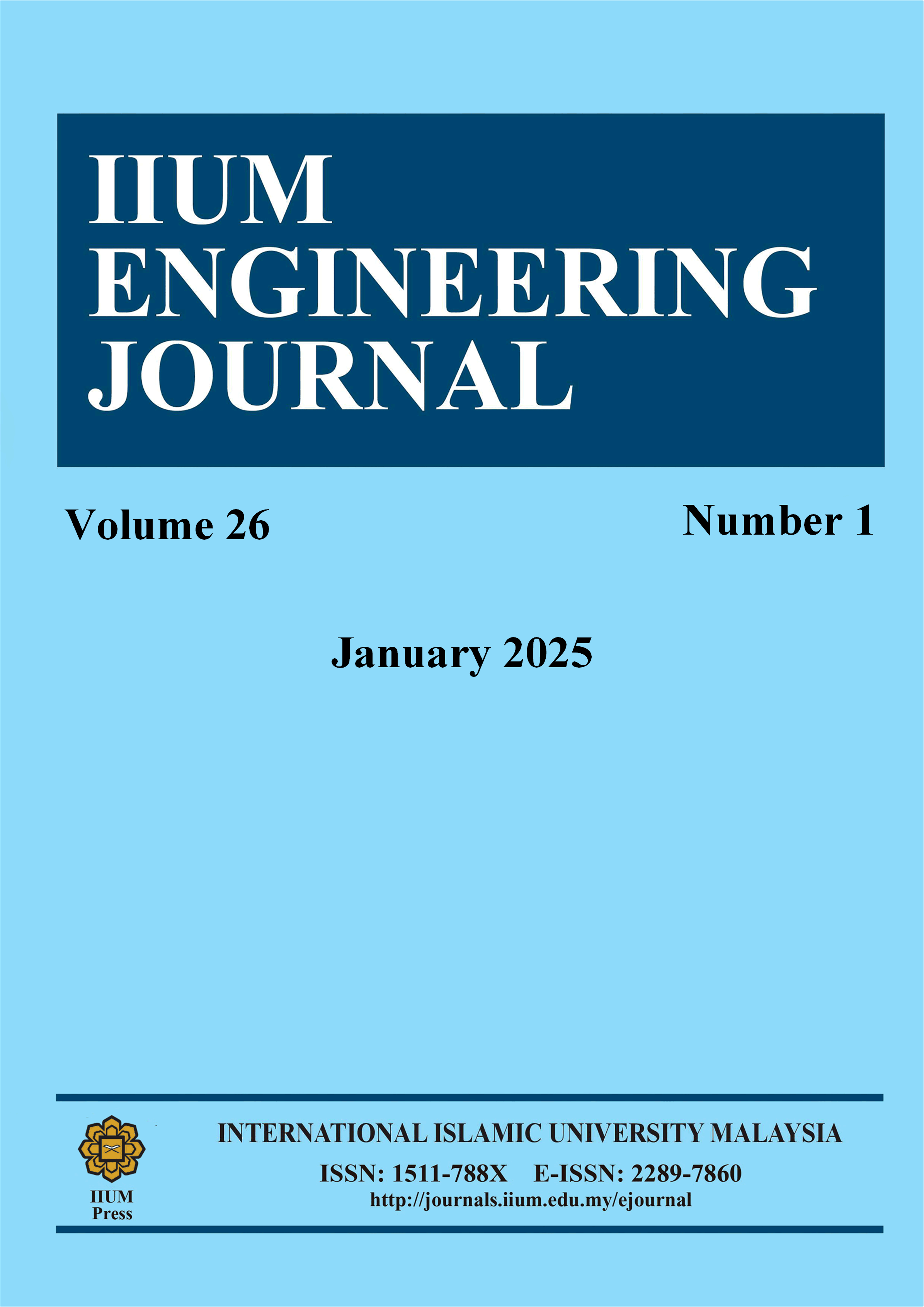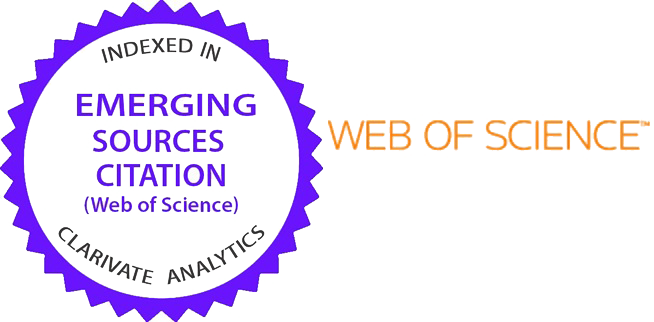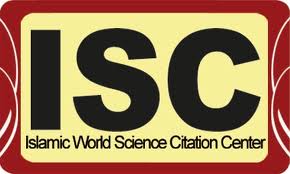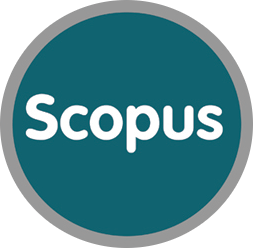Enhanced Early Autism Screening: Assessing Domain Adaptation with Distributed Facial Image Datasets and Deep Federated Learning
DOI:
https://doi.org/10.31436/iiumej.v26i1.3186Keywords:
Artificail Intelligence, Deep learning, Autism Spectrum Disorder, Data FederationAbstract
This study offers a significant advancement in the area of early autism screening by offering diverse domain facial image datasets specifically designed for the detection of Autism Spectrum Disorder (ASD). It stands out as the pioneering effort to analyze two facial image datasets – Kaggle and YTUIA, using federated learning methods to adapt domain differences successfully. The federated learning scheme effectively addresses the integrity issue of sensitive medical information and guarantees a wide range of feature learning, leading to improved assessment performance across diverse datasets. By employing Xception as the backbone for federated learning, a remarkable accuracy rate of almost 90% is attained across all test sets, representing a significant enhancement of more than 30% for the different domain test sets. This work is a significant and remarkable contribution to early autism screening research due to its unique novel dataset, analytical methods, and focus on data confidentiality. This resource offers a comprehensive understanding of the challenges and opportunities in the field of ASD diagnosis, catering to both professionals and aspiring scholars.
ABSTRAK: Kajian ini menawarkan kemajuan yang ketara dalam bidang saringan awal autisme dengan menyediakan pelbagai set data imej wajah yang direka khusus untuk pengesanan Gangguan Spektrum Autisme (ASD). Kajian ini menonjol sebagai usaha perintis untuk menganalisis dua set data imej wajah – Kaggle dan YTUIA, menggunakan kaedah pembelajaran teragih untuk menyesuaikan perbezaan domain dengan jayanya. Skim pembelajaran teragih ini berkesan menangani isu integriti maklumat perubatan sensitif dan menjamin pembelajaran ciri yang meluas, yang membawa kepada prestasi penilaian yang lebih baik merentas set data yang berbeza. Dengan menggunakan Xception sebagai tunjang pembelajaran teragih, kadar ketepatan yang luar biasa hampir 90% dicapai merentas semua set ujian, mewakili peningkatan ketara lebih daripada 30% untuk set ujian domain yang berbeza. Hasil kerja ini merupakan sumbangan penting dan luar biasa dalam penyelidikan saringan awal autisme kerana set data yang unik dan baharu, kaedah analisis yang digunakan, serta tumpuan kepada kerahsiaan data. Sumber ini menawarkan pemahaman yang menyeluruh mengenai cabaran dan peluang dalam bidang diagnosis ASD, sesuai untuk para profesional dan sarjana yang berminat.
Downloads
Metrics
References
Autism (2023).World Health Organization. Available: https://www.who.int/news-room/fact-sheets/ detail/autism-spectrum-disorders
Rashid, M. M., & Alam, M. S. (2024). Power of Alignment: Exploring the effect of face alignment on ASD diagnosis using facial images .IIUM Engineering Journal, 25(1):317–327. https://doi.org/10.31436/iiumej.v25i1.2838 DOI: https://doi.org/10.31436/iiumej.v25i1.2838
Alam, M. S., Rashid, M. M., Roy, R., Faizabadi, A. R., Gupta, K. D., & Ahsan, M. M. (2022). Empirical Study of Autism Spectrum Disorder Diagnosis Using Facial Images by Improved Transfer Learning Approach. Bioengineering, 9(11):1–18. https://doi.org/10.3390/bioengineering9110710 DOI: https://doi.org/10.3390/bioengineering9110710
Kojovic, N., Natraj, S., Mohanty, S. P., Maillart, T., & Schaer, M. (2021). Using 2D video-based pose estimation for automated prediction of autism spectrum disorders in young children. Scientific Reports, 11(1):15069. https://doi.org/10.1038/s41598-021-94378-z DOI: https://doi.org/10.1038/s41598-021-94378-z
Khodatars, M., Shoeibi, A., Sadeghi, D., Ghaasemi, N., Jafari, M., Moridian, P., Khadem, A., Alizadehsani, R., Zare, A., Kong, Y., Khosravi, A., Nahavandi, S., Hussain, S., Acharya, U. R., & Berk, M. (2021). Deep learning for neuroimaging-based diagnosis and rehabilitation of Autism Spectrum Disorder: A review. Computers in Biology and Medicine, 139:104949. https://doi.org/10.1016/j.compbiomed.2021.104949 DOI: https://doi.org/10.1016/j.compbiomed.2021.104949
Mohammad Shafiul Alam, Zabina Tasneem, Sher Afghan Khan, & Muhammad Mahbubur Rashid. (2023). Effect of Different Modalities of Facial Images on ASD Diagnosis using Deep Learning-Based Neural Network. Journal of Advanced Research in Applied Sciences and Engineering Technology, 32(3):59–74. https://doi.org/10.37934/araset.32.3.5974 DOI: https://doi.org/10.37934/araset.32.3.5974
Uddin, M. Z., Shahriar, M. A., Mahamood, M. N., Alnajjar, F., Pramanik, M. I., & Ahad, M. A. R. (2024). Deep learning with image-based autism spectrum disorder analysis: A systematic review. Engineering Applications of Artificial Intelligence, 127:107185. https://doi.org/10.1016/j.engappai.2023.107185 DOI: https://doi.org/10.1016/j.engappai.2023.107185
Alam, M. S., Rashid, M. M., Faizabadi, A. R., Mohd Zaki, H. F., Alam, T. E., Ali, M. S., Gupta, K. D., & Ahsan, M. M. (2023). Efficient Deep Learning-Based Data-Centric Approach for Autism Spectrum Disorder Diagnosis from Facial Images Using Explainable AI. Technologies, 11(5):115. https://doi.org/10.3390/technologies11050115 DOI: https://doi.org/10.3390/technologies11050115
Vuilleumier, P., & Pourtois, G. (2007). Distributed and interactive brain mechanisms during emotion face perception: Evidence from functional neuroimaging. Neuropsychologia, 45(1): 174–194. https://doi.org/10.1016/j.neuropsychologia.2006.06.003 DOI: https://doi.org/10.1016/j.neuropsychologia.2006.06.003
Vizitiu, A., Nita, C. I., Puiu, A., Suciu, C., & Itu, L. M. (2019). Towards Privacy-Preserving Deep Learning based Medical Imaging Applications. 2019 IEEE International Symposium on Medical Measurements and Applications (MeMeA), 1–6. https://doi.org/10.1109/MeMeA.2019.8802193 DOI: https://doi.org/10.1109/MeMeA.2019.8802193
Feki, I., Ammar, S., Kessentini, Y., & Muhammad, K. (2021). Federated learning for COVID-19 screening from Chest X-ray images. Applied Soft Computing, 106:107330. https://doi.org/10.1016/j.asoc.2021.107330 DOI: https://doi.org/10.1016/j.asoc.2021.107330
Li, X., Gu, Y., Dvornek, N., Staib, L. H., Ventola, P., & Duncan, J. S. (2020). Multi-site fMRI analysis using privacy-preserving federated learning and domain adaptation: ABIDE results. Medical Image Analysis, 65:101765. https://doi.org/10.1016/j.media.2020.101765 DOI: https://doi.org/10.1016/j.media.2020.101765
Li, Y., Huang, W.-C., & Song, P.-H. (2023). A face image classification method of autistic children based on the two-phase transfer learning. Frontiers in Psychology, 14. https://doi.org/10.3389/fpsyg.2023.1226470 DOI: https://doi.org/10.3389/fpsyg.2023.1226470
Rabbi, M. F., Zohra, F. T., Hossain, F., Akhi, N. N., Khan, S., Mahbub, K., & Biswas, M. (2023). Autism Spectrum Disorder Detection Using Transfer Learning with VGG 19, Inception V3 and DenseNet 201, Communications in Computer and Information Science, Springer, Cham, 1704:190–204. https://doi.org/10.1007/978-3-031-23599-3_14 DOI: https://doi.org/10.1007/978-3-031-23599-3_14
Kang, H., Yang, M., Kim, G.-H., Lee, T.-S., & Park, S. (2023). DeepASD: Facial Image Analysis for Autism Spectrum Diagnosis via Explainable Artificial Intelligence. 2023 Fourteenth International Conference on Ubiquitous and Future Networks (ICUFN), 2023:625–630. https://doi.org/10.1109/ICUFN57995.2023.10200203 DOI: https://doi.org/10.1109/ICUFN57995.2023.10200203
M. Ghazal, T., Munir, S., Abbas, S., Athar, A., Alrababah, H., & Adnan Khan, M. (2023). Early Detection of Autism in Children Using Transfer Learning. Intelligent Automation & Soft Computing, 36(1):11–22. https://doi.org/10.32604/iasc.2023.030125 DOI: https://doi.org/10.32604/iasc.2023.030125
Musser, M. (2020). Detecting Autism Spectrum Disorder in Children With Computer Vision. Towards Data Science. Available: https://github.com/mm909/Kaggle-Autism
Rajagopalan, S. S., & Goecke, R. (2014). Detecting self-stimulatory behaviours for autism diagnosis. 2014 IEEE International Conference on Image Processing (ICIP), 2014:1470–1474. https://doi.org/10.1109/ICIP.2014.7025294 DOI: https://doi.org/10.1109/ICIP.2014.7025294
Shamseddine, H., Otoum, S., & Mourad, A. (2022). On the Feasibility of Federated Learning for Neurodevelopmental Disorders: ASD Detection Use-Case. GLOBECOM 2022 - 2022 IEEE Global Communications Conference, 1121–1127. https://doi.org/10.1109/GLOBECOM48099.2022.10001248 DOI: https://doi.org/10.1109/GLOBECOM48099.2022.10001248
Farooq, M. S., Tehseen, R., Sabir, M., & Atal, Z. (2023). Detection of autism spectrum disorder (ASD) in children and adults using machine learning. Scientific Reports, 13(1): 9605. https://doi.org/10.1038/s41598-023-35910-1 DOI: https://doi.org/10.1038/s41598-023-35910-1
Lakhan, A., Mohammed, M. A., Abdulkareem, K. H., Hamouda, H., & Alyahya, S. (2023). Autism Spectrum Disorder detection framework for children based on federated learning integrated CNN-LSTM. Computers in Biology and Medicine, 166:107539. https://doi.org/10.1016/j.compbiomed.2023.107539 DOI: https://doi.org/10.1016/j.compbiomed.2023.107539
Fan, Z., Su, J., Gao, K., Hu, D., & Zeng, L.-L. (2021). A Federated Deep Learning Framework for 3D Brain MRI Images. 2021 International Joint Conference on Neural Networks (IJCNN), 1–6. https://doi.org/10.1109/IJCNN52387.2021.9534376 DOI: https://doi.org/10.1109/IJCNN52387.2021.9534376
Wang, J., Zhang, L., Wang, Q., Chen, L., Shi, J., Chen, X., Li, Z., & Shen, D. (2020). Multi-Class ASD Classification Based on Functional Connectivity and Functional Correlation Tensor via Multi-Source Domain Adaptation and Multi-View Sparse Representation. IEEE Transactions on Medical Imaging, 39(10): 3137–3147. https://doi.org/10.1109/TMI.2020.2987817 DOI: https://doi.org/10.1109/TMI.2020.2987817
Downloads
Published
How to Cite
Issue
Section
License
Copyright (c) 2025 IIUM Press

This work is licensed under a Creative Commons Attribution-NonCommercial 4.0 International License.






















